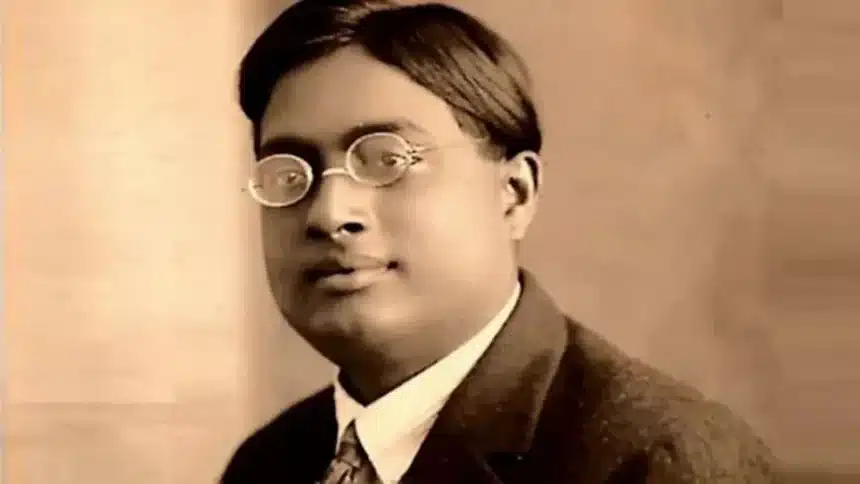Satyendra Nath Bose (1 January 1894- 4 February 1974) was an Indian mathematician and physicist. He was honored with Padma Vibhushan, in 1954.
His interests included physics, mathematics, chemistry, biology, mineralogy, philosophy, art, literature, and music. He joined many research and development committees in India.
Life and Career
Satyendra Nath Bose was born on 1 January 1894, in Kolkata, India. He completed his schooling at New Indian School, and in 1909, he completed his Matriculation. In 1913, he received his B.Sc. degree in mixed mathematics from Presidency College. Later, he received his M.Sc. degree from mixed mathematics Sir Ashutosh Mukherjee’s Science College, in 1915.
When Albert Einstein published two papers that changed physics in 1905 and was inspired by them, he joined as a researcher at Calcutta University’s Science College and studied relativity, in 1916. Physicists in Europe began exploring quantum theory a few years before Bose began researching.
After 5 years, in 1921, He joined the department of physics at Dhaka University and helped improve the department’s infrastructure and curriculum.
He wrote a four-page paper titled “Planck’s Law and the Light Quantum Hypothesis” in 1924, which helped create quantum statistics. Einstein won the Nobel Prize in physics three years earlier, and Bose sent him a note in which he claimed to have developed “Planck’s law independently of classical electrodynamics.” In the letter, Bose said, “Though a stranger to you, I have no qualms about sending you this paper’’. “It’s like we’re all your students, but we benefit only from your writings.”
Einstein translated Bose’s papers “Planck’s Law” and “The Hypothesis of Light Quanta” into German and had them published in Zeitschrift für Physik under Bose’s name in 1924.
In 1925, Bose went to Europe. He spent a year in Paris. He worked in Madame Curie’s laboratory. He was also part of a campaign in France to end British rule in India by a group of Indian students. In Berlin, he met Einstein, Niels Bohr, Werner Heisenberg, and Erwin Schrödinger, some of the greatest physicists of the time.
After he returned to India, Bose became the head of the physics department at the University of Dhaka. The rest of his career was spent teaching and doing research in fields like X-ray spectroscopy, optical spectroscopy, and unified field theories. He returned to Calcutta before Partition and returned to the University of Calcutta, where he taught until 1956. He was later made vice-chancellor at Visva Bharati University. Besides physics, Bose liked to teach Bengali science.
As a a true polymath, Bose went on to serve as president of many scientific institutions including the Indian Physical Society, National Institute of Science, Indian Science Congress and the Indian Statistical Institute. He was also an adviser to the Council of Scientific and Industrial Research, and later became a Fellow of the Royal Society. In honor of Bose’s legacy, any particle that conforms with his statistics today is known as a boson. Many scientific breakthroughs have come from his work including the discovery of the particle accelerator and the God particle.
He died on 4 February 1974 in Kolkata, India.
Award
In 1954, he was honored with the Padma Vibhushan, India’s second-highest civilian award. on 4 June 2022, Google celebrated Celebrated Satyendra Nath Bose with a doodle. On this day in 1924, he sent his quantum formulations to Albert Einstein who immediately recognized it as a significant discovery in quantum mechanics.
Read More; 31 December of Indian and World History

